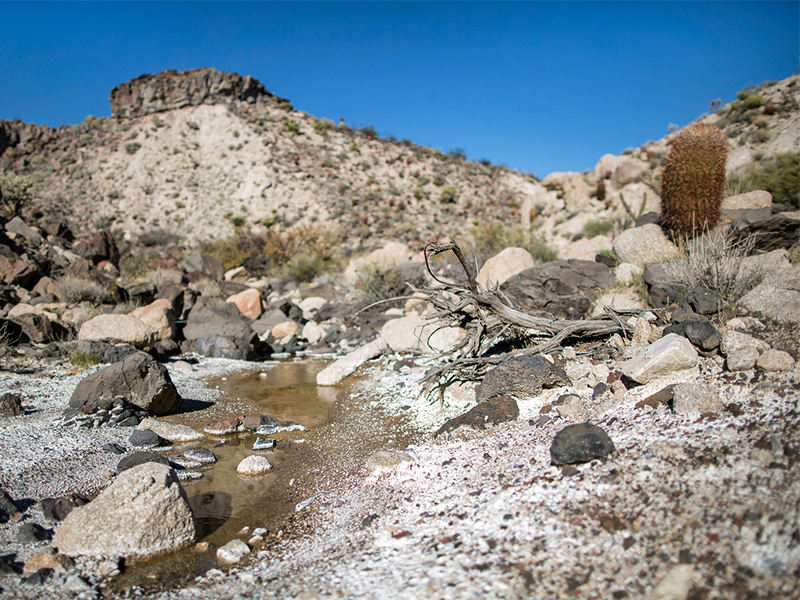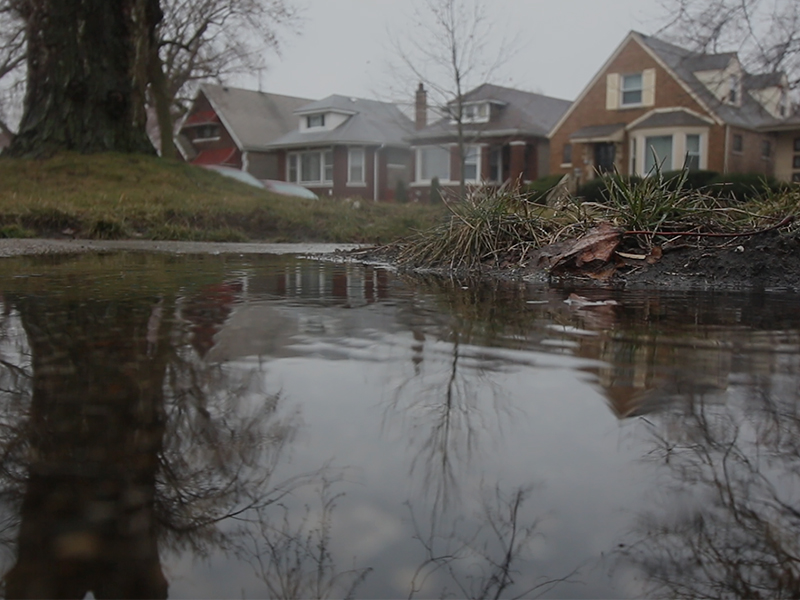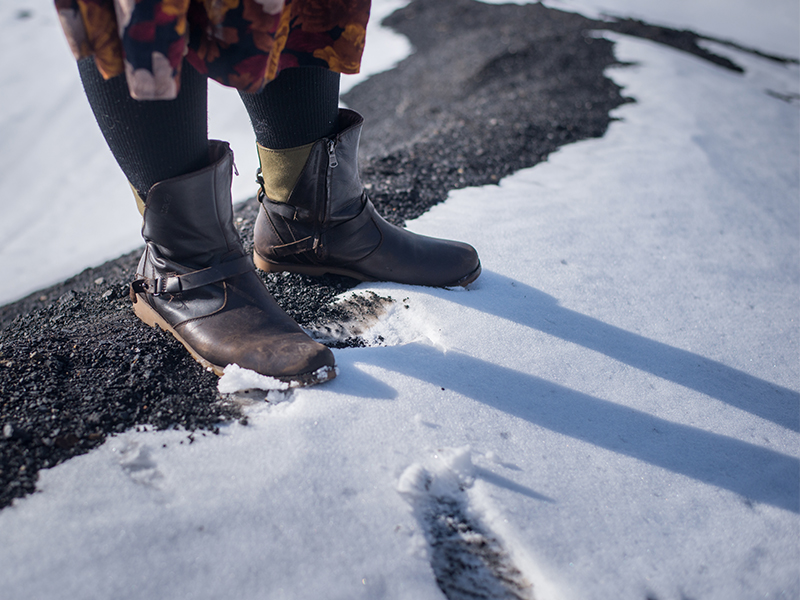Old King Coal
A princess, a miner and a movement to stop the war on coal


On a warm Friday afternoon in West Frankfort, Illinois, there’s an avalanche in front of city hall.
Actually, it’s The Avalanche, a carnival ride. A dozen or more rides are jammed onto a stretch of Poplar Street and its adjacent parking lots. The area’s transformed, for a few days, into a midway filled with colored lights, music and the smell of funnel cake. This weekend marks the Old King Coal Festival, a tradition dating back 75 years for this small town.
The festival got its name because Southern Illinois produces so much coal, boosters call it the Saudi Arabia of coal. No kidding. The coal industry has shaped whole towns in Illinois, and defined their history — towns like West Frankfort. Of course, coal has been pulled right into the middle of the climate change fight. So West Frankfort and its heritage have been dragged in too.

Recently, some people from around West Frankfort decided they were going to pull together an army of sorts, to take up their part in that fight. At first, it was just a virtual army, on Facebook. The organizers have come to the Old King Coal Festival to see if those troops might show up in real life.
They’re holding a rally here Saturday. And I’ve come to see what happens when they do.


The face of the festival

But first, on Friday evening, with the festival just getting underway, here comes Jamie Harmon, the winner of this year’s Princess Flame pageant, threading a path through the crowd in her tiara and sash.
The Princess pauses — on her way to help introduce the evening’s entertainment — when her boyfriend points out a pair of girls who seem to think the 19 year old is a real princess.
“This is my favorite part,” she says, as she turns to greet the little admirers with a big smile and a bigger “HIIIIIEE.”
Turning back to her boyfriend, Harmon giggles. “They’re like: 'Oh, my gosh! She’s looking at me!'” Then, to her fans, another big smile, another wave, another big HIEEE, and she’s on her way.
Princess Flame passes through an alley lined with booths: the Lions Club selling lemonade, a local hot-sauce entrepreneur, an information stand for black lung disease. Then up the steps, in her wood-soled high-heel sandals, to the stage, where she waves to the crowd and helps usher on the night’s first band.
Later, I ask Princess Flame about her connection to coal. Her answer says a lot about what —or who— isn’t there anymore. “Both of my grandfathers passed away before I got to meet them — before I was born,” she says. “And they were both coal miners.”
That’s about it. Two grandfathers she never even met. And as paper-thin as that connection is, it’s more than her friends have.
“Honestly, I don’t think people realize that this is about coal,” she says.
“They know it’s the Old King Coal festival, but my friends are like, ‘Why is it called that?’ It’s like…,” she sighs. “I dunno.”
Actually, it makes sense that the newly
crowned Princess Flame has barely any connection to the coal industry, the empire to which she owes her crown.

Princess Flame with Old King Coals of the past
In the 75 years since the first Old King Coal celebration, state records show, more than 85 percent of the coal-mining jobs in Illinois have disappeared. Not because of regulations, or environmentalists, or because the coal ran out. More than anything else, it’s because of technology. Even with all those jobs gone, Illinois actually produced more coal in 2014 than it did when the Old King Coal festival started. Mostly, that’s because machinery replaced the workers. In 2014, the state actually produced more coal than it had in 1941.
And that’s how it comes to be that the princess mascot of the Old King Coal Festival has almost no personal connection to coal-mining.


War stories
And yet, the bond between West Frankfort and coal mining still runs deep. In addition to Jamie Harmon, there are people here like Jack McReynolds. He’s 80 years old, has lived here for almost all of them, and worked 40 of them underground. His stories about this place are about coal mining. And his coal-mining stories are horror stories, war stories.

In 1951, when McReynolds was fifteen, an explosion underground killed more than a hundred guys. That was Christmas Eve. “There was no Christmas that year,” he recalls. Families pulled wreaths off the doors, put the gifts away.
“I seen some of the bodies,” he tells me. “They brought ‘em to the gym, at the school. They looked like bodies you would see in a combat area overseas: limbs blowed off, heads blowed off.”

Another story is from 1922, before McReynolds was born, when a local operator tried running a mine with non-union labor and heavy security — which the union men got past. “They went inside this non-union mine, took all the workers out,” McReynolds says, “and executed them.”
McReynolds’ grandpa took his daughters out to see the bodies. “And my mother said he pointed and said, ‘Girls, there’s the vermin that tried to take the food off your table.’ My mother never forgot that.”
And right there, McReynolds lets out a little chuckle — the chuckle of a proud, old warrior.
The chuckle comes back, double, when he tells about the time he saw combat himself — when he traveled to Virginia in the ‘80s, to fight strikebreakers. He says guys threw Molotov cocktails into coal trucks and derailed trains.

Asked about what he did, McReynolds pauses. Smiles. And says only: “Different things.” And chuckles. People like him fought for these jobs, died for them, did different things for them.
For people like him, coal mining defines the place they’re from and the people who live there. Coal mining is the story they tell themselves about who they are.


Lost livelihood
If Jack McReynolds represents the proud past of coal mining here — and Jamie Harmon is its obscure future — Dave Diaz is living in its humbled present. He’s 34, worked in coal mines for 11 years, until he got laid off in February. And his view of the fight over coal and pollution is surprisingly philosophical.

“I don’t think anybody wants to see anything bad happen to the planet,” he tells me.
“I’m not sitting here like, ‘Yay, pollution!’ It’s just, touchy subjects. Especially when it’s somebody’s livelihood.”
Diaz is a Chicago native — he moved here as a teenager, after his dad retired from the Chicago Police Department — and he’s a single dad to an eight-year-old boy.
He says he felt lucky to have that coal-mining job, doing work he enjoyed, with guys he loved, for great money. He says his salary topped $100,000 a year.
“There's not many jobs that are competitive like that down here in Southern Illinois,” he says. “I mean, that compete with the wages that you make at a coal mine.”
So, looking for the next job, it’s been a challenge.
“I applied for the railroads,” he tells me. “I applied for jobs out of state, which — I didn't really want to leave my family. I mean, I know my son doesn't. You know he'd be real mad at me if I had to move away from everybody.”

Regulation caption
Imagine being Diaz — waiting, hoping for that good-paying job to come back, looking around at the really-not-that-great alternatives, and hearing a presidential candidate say something like this: “We are going to put a lot of coal miners —and coal companies— out of business.”
That would be Hillary Clinton — and although she backpedaled, as those remarks went on, to try to say what she would do for miners, how much she appreciated them, those are the words that stick with people like Diaz. “It gets to you,” he says. “You know? I mean, God: Have some compassion. And she just comes out flat out says she's going to destroy your life. I mean it's just like, geez. I mean, have a little bit of a soul.”
So, the relationship between West Frankfort and coal is all of this: It’s blithe Princess Jamie, it’s warrior Jack, it’s Diaz. It’s grim, and nostalgic, and fading, and visceral, and very loyal, and very proud.


“Stop the war on coal”
And it’s out of that relationship that a fledgling grassroots pro-coal movement recently sprouted. A movement that felt, maybe, like something new. New enough for me to travel to West Frankfort to see it firsthand.
It started like this: In February, when Diaz and about a hundred other people got laid off, a guy named Bob Sandidge was mulling things over, at home, with his wife Kelly, a coal-miner’s daughter. “She’s the one that said, ‘Hey, we need to do something. Let’s launch a Facebook page.”
They did — called it the “Coal Miner’s Movement, ” although the page itself was the whole movement at that point — and the message was “Stop the war on coal.”

From one perspective, the big war — the war on coal-mining jobs — was already over, and technology had won it a long time ago, taking away almost all the jobs. But with every proposed regulation, and every layoff, almost everybody who’s still connected to this industry feels like their way of life — their identity, their integrity — is under assault. So, the message: Stop the war on coal.
Bob and Kelly Sandidge launched their Facebook group on a Saturday, “And MAN, it exploded,” Bob recalls. “Man, oh man.” By Monday morning, they had 13,000 Facebook likes —and a DC lobbying consultant on the phone, offering to volunteer his time.
For weeks the momentum built — 20,000 likes, 25,000, 28,000.

To Bob and Kelly Sandidge, to the lobbyist —to me— it felt like maybe, just maybe, they were suddenly mounting an army, a groundswell of people ready to take on a fight in the name of their way of life.
Then the Old King Coal festival organizers came calling, inviting Bob and Kelly to lead a rally at the festival, offering a 90-minute slot on the festival stage. It seemed like a chance to turn that online groundswell into a crowd, a crowd capable of pushing back.
So, they went for it. And I went to see them.
Friday night, at the festival, I hung out at the booth they’d set up across from the Lions Club lemonade stand, to sign people up for the Coal Miner’s Movement. I watched Bob Sandidge work some prospective recruits. “Membership’s free,” he tells them. All it takes is a name and an email address, pretty much. You’ll get a newsletter. And a free sticker. The sticker, he’s found, really helps overcome people’s reluctance.
Slowly, he works toward his goal, signing up maybe a dozen people an hour. He sells a few hats, a few T-shirts, gets some encouragement. While he chats up a potential recruit, I see a kid, maybe 10 years old, come up and offer him a silent fist bump.
Saturday’s the festival’s big day — Bob and Kelly’s rally day —and I watch as they ride in a parade at 1 p.m. behind Princess Flame on the back of a convertible. (Also: Teen Princess Flame, Pre-Teen Princess Flame, and various princess runners-up, each on the back of her own convertible.)

Then, back at the fairgrounds, it’s 3 o’clock — time for the rally. The stage sits at one end of the festival grounds, facing a parking lot for the local Moose Lodge. On one side of it, an alley of booths like the Sandidges’ leads to the midway with its rides and games and treats.
This was it: Having seen the response the Coal Miner’s Movement got on Facebook, I’d come to West Frankfort with a vision of a big crowd, spilling out from the stage. Former miners, laid-off miners, families of miners, kids, the likes of Jack McReynolds and Dave Diaz.
But at go time, Bob and Kelly find themselves unsure of exactly what to do. Because nobody’s there. Nobody. The stage faces a completely empty parking lot.
“We need to round up more people,” Kelly says.
“How do you do that?” Bob asks her.
“I don’t know,” she says. “Not a lot of people here.”
“Not a lot of people,” he agrees.
They don’t rush off to the Ferris Wheel or the funnel-cake stand to round people up — it’s not exactly clear how well that would work. Instead, they hang out by their booth, getting antsy, trying to keep their cool.
This goes on for like a half an hour. Bob keeps saying things like, “I’m gonna give it a few more minutes,” and asking the festival organizers if they have advice. They don’t.
Finally, the Sandidges and a friend of theirs have an idea: Turn the speakers away from the parking lot and aim them so the sound travels down the row of booths. Stand on that end of the stage and just talk to the few people who are milling around there.
They do it.

A few minutes later, Sandidge starts his speech by saying he wants to acknowledge elected officials who have come. He says he’ll call out their offices and ask them to pipe up for applause.
“So, if there’s anyone here from the U.S. Senate, we’d like to hear that.”
Silence. He continues. “Anybody from the U.S. House of Representatives?”
Nobody. “How about the Illinois State Senate?”
A hand goes up. Gary Forby, perhaps coal’s number-one advocate in Springfield. “Mr. Forby’s here!”
But no local officials are here — no mayors, no nothing. Sandidge soldiers on through the rest of his speech—it’s maybe five minutes.

Afterwards, he gets himself a big cone of soft-serve ice cream as a reward. Frankly, he deserves it. By the time he got up on that stage, I’d seen that he’d already acknowledged defeat. Getting up on stage anyway, going through with that speech, that took…something. A willingness to endure pain.
So when I ask how he thinks it all went, of course he puts a brave face on things. “It’s good,” he says, licking his ice cream. “Um, it’s always disappointing, and it can be frustrating not to have as big a turnout as you want.” Back to his ice cream.


This isn't coal country anymore

If Bob and Kelly Sandidge hoped to find ground troops for their movement to Stop the War on Coal, they’ve gotten the message: There aren’t any troops left here.
As one person tells me later: This isn’t coal country. Not anymore. The coal still comes out of the ground, but without many workers.
Facebook is the perfect place to find what’s left on the human side: Memories, fierce pride in something people have risked and endured and done terrible things for. Hard, dangerous work that powered a country, provided for families, defined a place. It’s also the place to find the indignation: the feeling that when people say the climate can’t take any more coal mining, they’re adding insult to injury, trying to take away the little that’s left.
Not even the jobs so much as the pride.
And on Facebook, it just takes a second to like something, just a few more to make a comment like “Keep coal in the USA!” or “Keep up the fight.”

But here, in West Frankfort, with the jobs long gone, what’s left is mostly this: Carnival rides and funnel cake. Dead grandparents you never met. A lemonade stand and a black-lung information tent.
Earlier, Sandidge told me — he’d cleared his evening. He was planning to stick around until midnight at that booth… collecting signatures and email addresses… feeding the momentum that he’d gotten a taste of.
But an hour after the rally flops — by the time Princess Flame shows up to introduce the evening’s first band, he and Kelly are at their jeep — cutting off the decorations from the parade. By the time the Princess takes the stage, they are long gone.









 to WBEZ
to WBEZ
